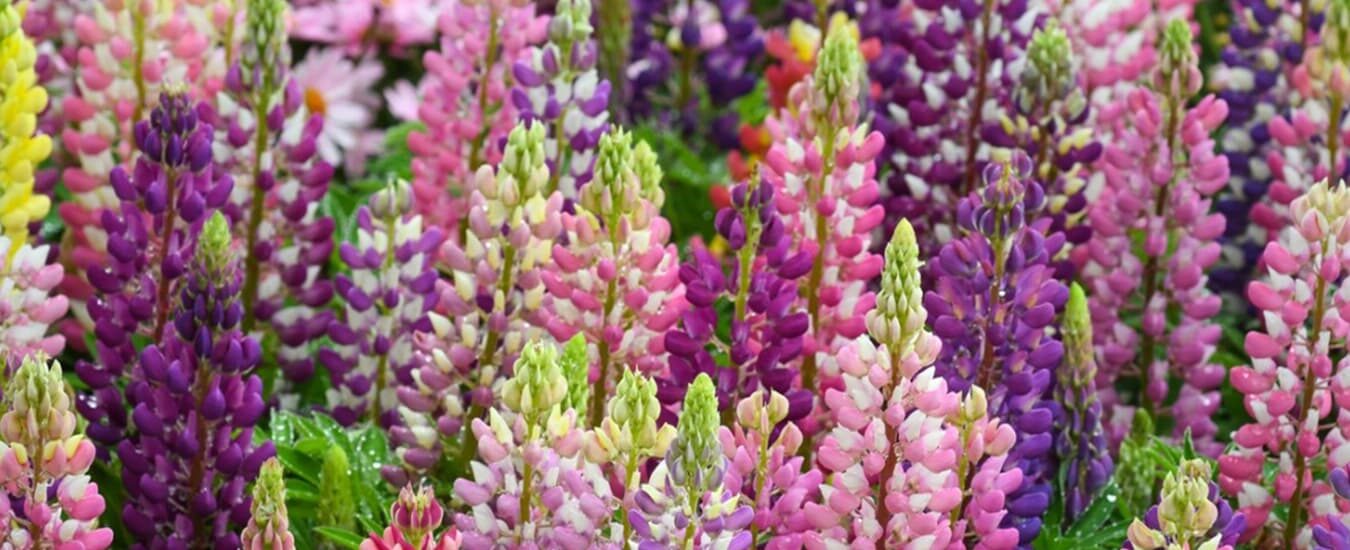There are hundreds if not thousands of perennial plants which will grow well in UK gardens but how to choose which are essential? The ones I have chosen for this article are all hardy, easy to find, fairly easy to grow and will give your garden real flower power, either for their stunning and dramatic blooms or for the longevity of flowering. I love plants which give me a lot for a small investment, and these all fit that bill.
Achilleas are wonderful perennials both for the garden and wildlife. They have beautiful feathery foliage and gorgeous flat topped flower clusters which act as landing pads for many pollinators. The orange and black striped Marmalade Hoverflies particularly love them. Achillea millefolium is a UK native. Its white flower heads are commonly seen swaying delightfully in the breeze on grasslands and roadsides. Cultivated varieties range in colour from white through pinks, yellows, oranges and reds.
Achilleas look wonderful in ornamental borders and patio pots. They are also great for gravel gardens because they like free draining soil and full sun to partial shade. Leave the seed heads on to catch the frost and provide winter structure. A really low maintenance plant, just cut back the old flower stems and foliage in late winter to early spring. Every three to five years if the clump is getting too big or developing a bare patch in the centre, lift and divide.
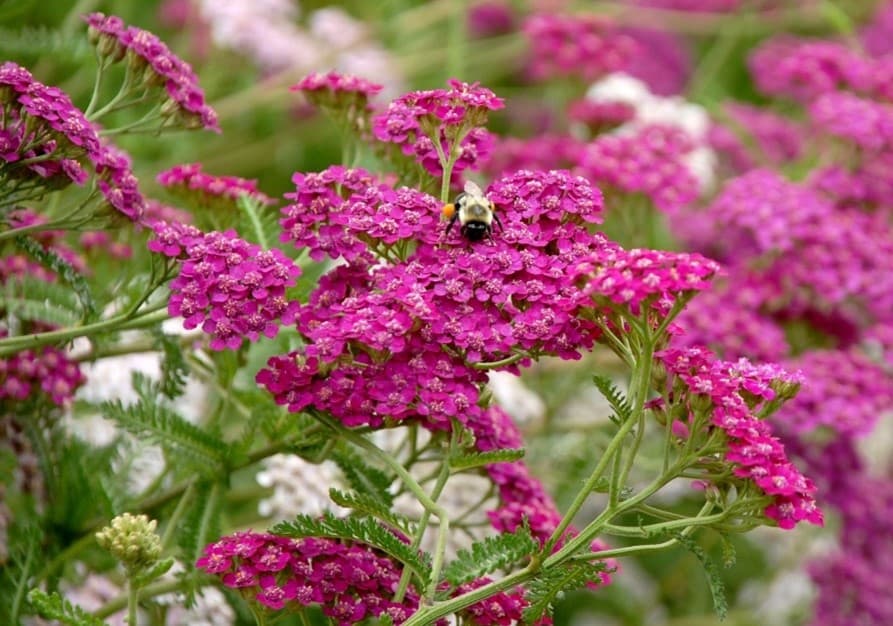
Agapanthus are also fabulous low maintenance perennials. They have beautiful loose spheres of flowers in blues, purples and whites, held aloft above the strappy green foliage. Give them full sun and well-drained soil and they will be very happy. Agapanthus are fantastic container plants as they quite like to have their roots restricted. Evergreen varieties are less hardy. Growing evergreen agapanthus in pots means you can move theme somewhere sheltered in winter. Deciduous types are hardier and will usually cope in milder areas, with a good autumn mulch to keep their roots warm over winter.
Once established agapanthus are drought tolerant and will be happy in a gravel garden or flower bed. However if they are very dry through summer and autumn it may affect the following year’s flowers. They are also suitable for coastal positions with salty air and sea breezes. Deadheading, by cutting the flower stems back at the base, will encourage them to flower again. Like achilleas, agapanthus seedheads can be left for winter structure and to sparkle in the frosts.
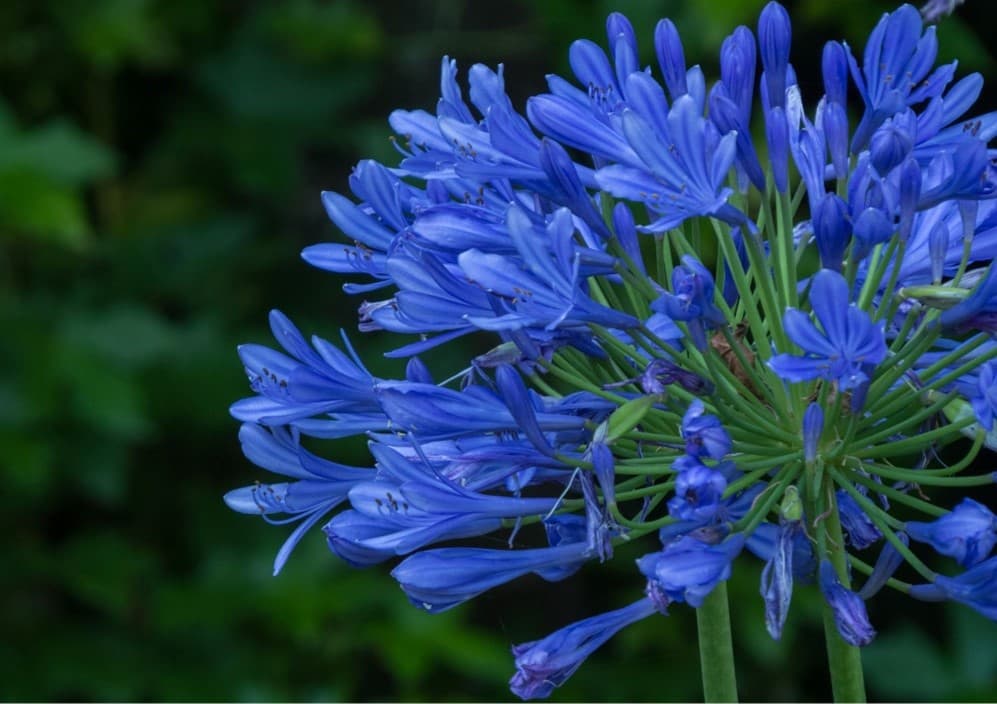
Delphiniums have long been a cottage garden favourite, with their towering summer spires in shades of pink, blue, purple and white. They make fantastic vertical accents that add height and drama to contrast with lower growing or mounding plants. Use them repeatedly to create rhythm through a border. They are favourites with pollinators and make stunning cut flowers. The ‘Magic Fountains’ series of delphiniums are compact, meaning they probably won’t need to be staked, unless you are in a windy spot.
Delphiniums need a little more maintenance than agapanthus and achillea. They need space and don’t perform well if crowded. You will need to protect them from slugs and snails in spring and provide support to stop the tall flower heads falling over. They need to be kept moist in summer and benefit from regular feeding. Mulch in autumn but don’t allow the ground to become waterlogged in winter. The extra work is worth it for their shear beauty and oomph in a flowerbed. After flowering, cut flower stems back to the ground and you may even get an encore in September.
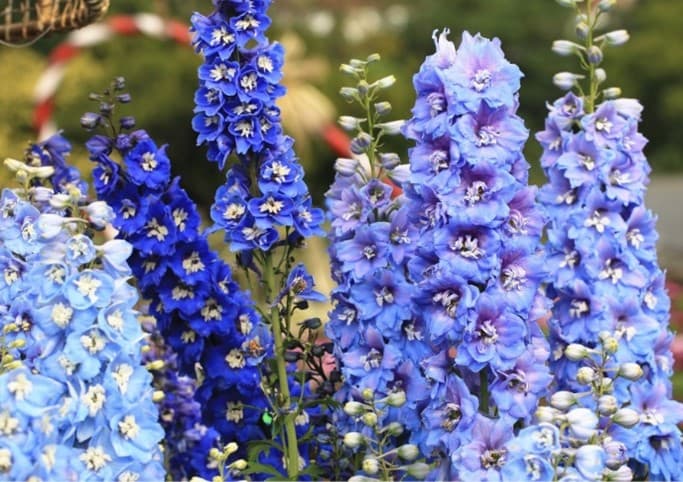
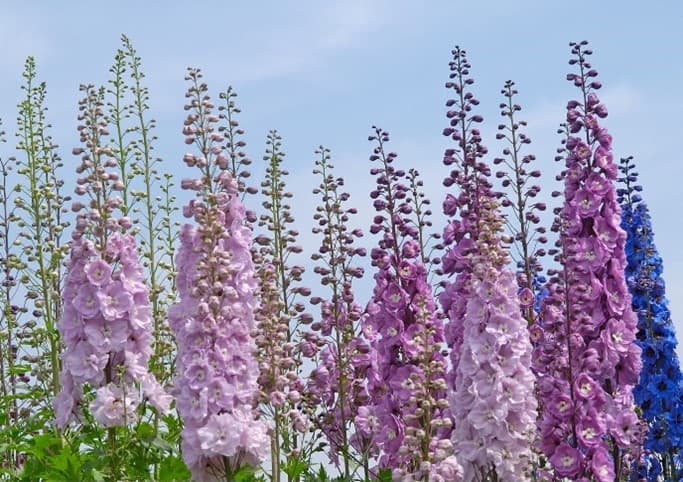
Perennial geraniums are different to those incorrectly named furry-leaved, summer bedding geraniums, which should be called pelargoniums. Often known as hardy geraniums these plants are amongst the most popular perennial plants in the UK. They are easy to grow with the ability to fill gaps and flower for months on end.
Related to our UK native wildflower Cranesbill, there are a few different species and each suits a slightly different position so there will always be a variety to suit your space. Most geraniums come in blues, pinks or whites. There are a few interesting varieties with almost black leaves (‘Black Beauty’) and contrasting blue or white flowers. The most popular of all is Geranium ‘Rozanne’ (as pictured below left), which was voted as the RHS Chelsea Flower Show Plant of the Centenary in 2013. It grows in sun or shade, almost any soil and flowers for months, filling gaps and covering any shabby lower leaves and ‘knobbly knees’ of other plants. It is particularly good at the front of borders. Dead head regularly and when the plant runs out of steam cut the whole thing back, and you should get a second flush of growth and flowers.
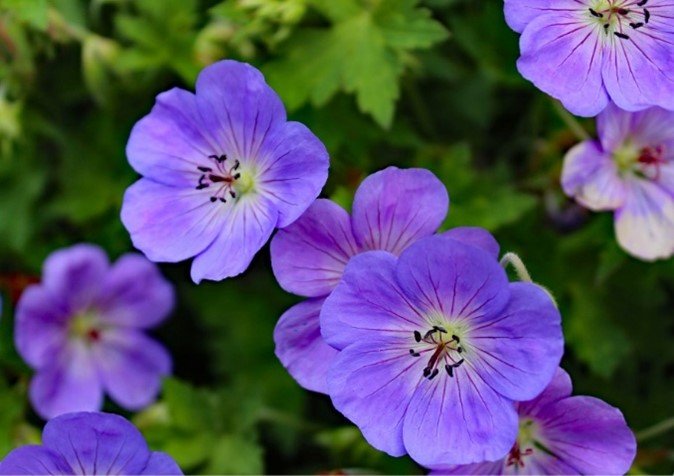
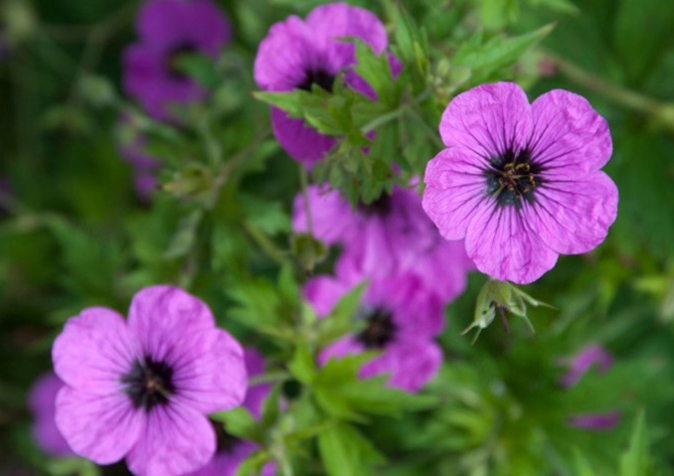
Geums are hardy, clump-forming perennials. They produce wiry spikes bearing open flowers in shades of red, orange yellow or peach. Most are about 30 to 50 cm tall with a few like ‘Totally Tangerine’ reaching 80 cm. Being semi-evergreen they have year round presence helping to give low mounding structure through the winter. Pollinators love them too.
While many cottage garden perennials lean towards the blue colour range, Geums provide some wonderful hot colours. ‘Totally Tangerine’ planted in amongst dark blue or purple flowering plants gives a real lift to a blue colour scheme that can otherwise look a little flat. The red of ‘Scarlet Tempest’ is also really invigorating. Geums work well in informal planting schemes and are happy in part shade. They give a burst of colour in late spring to summer. If the spent flowering stems are all cut back to the base they will often repeat flower in late summer or early autumn. Divide clumps every three years and water regularly during dry summers.
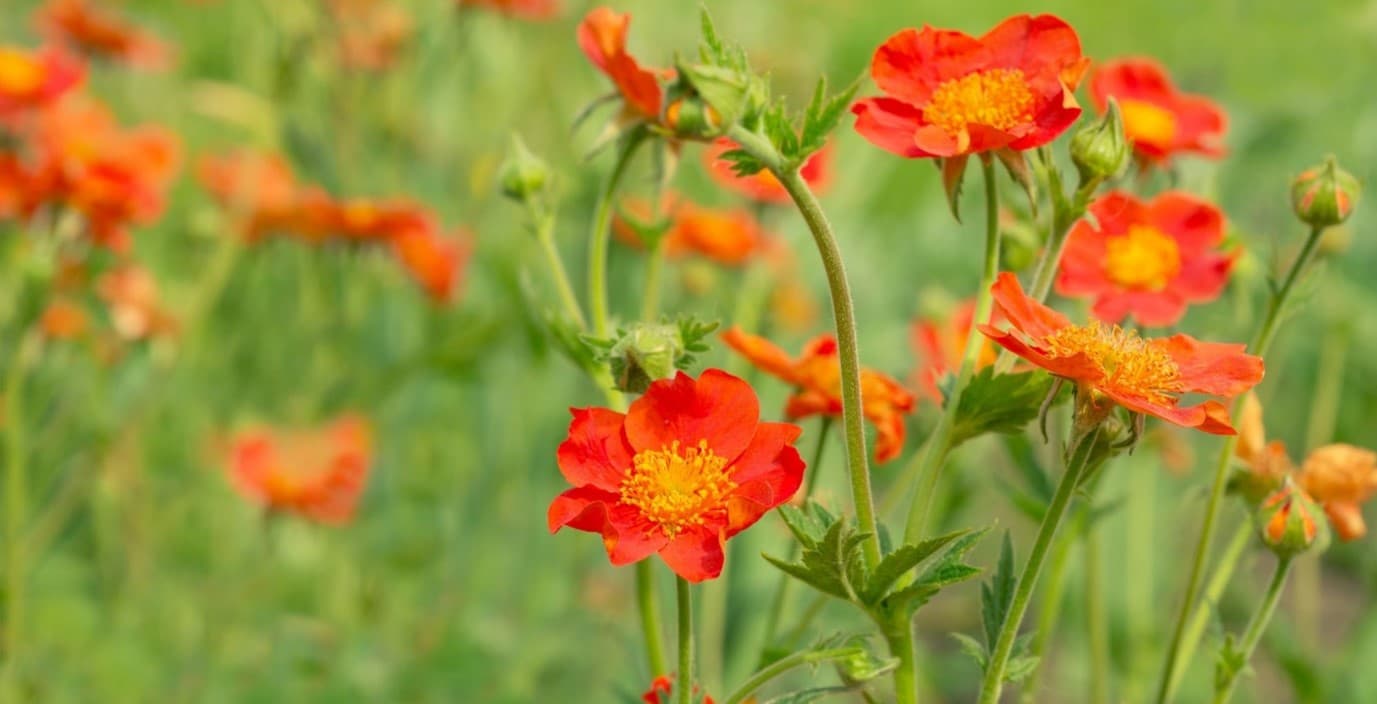
Lupins, like delphiniums are classic cottage garden plants and enjoy similar care and conditions. They also work well in more contemporary style gardens and mix well with grasses and other perennials. They have spikes of flowers in every colour of the rainbow, many have striking bi-coloured flowers creating dramatic vertical features. Their sweetly scented pea like flowers are loved by bees and open in succession from the bottom of the spire to the top. The gallery series of lupins are dwarfing forms growing to about 50cm, other varieties can grow to just over one metre.
They need a sunny spot in ground that won’t become waterlogged in winter. Water regularly for the first season; once established they only need watering in particularly dry periods. Like delphiniums, protect lupins from slugs and snails in spring. They love that lush new growth! Lupin roots make their own nitrogen, so they do not need lots of feeding unless flowering is poor. Cut spent flowering stems back to the ground to encourage more to grow.
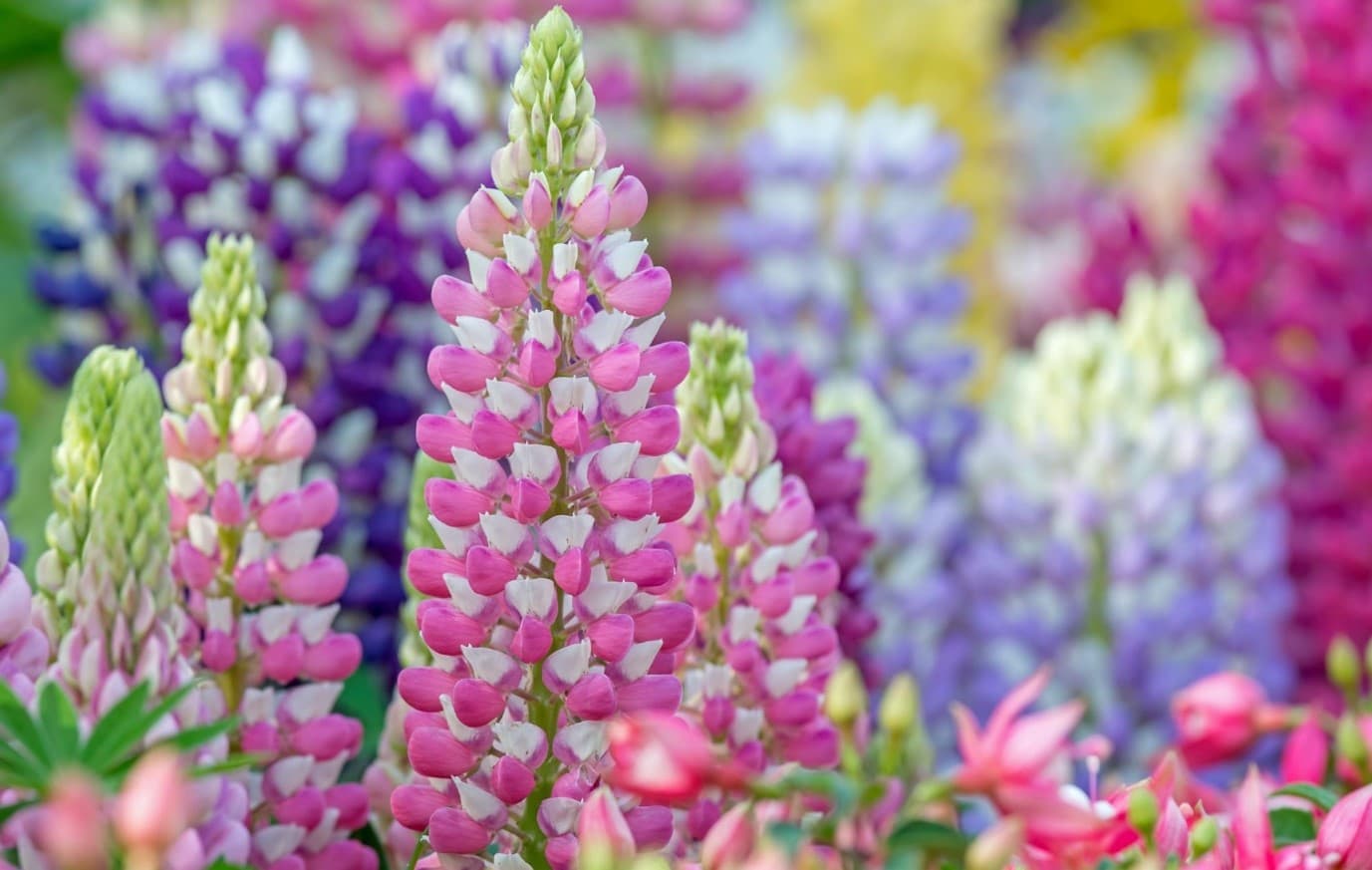
Nepeta is a fantastic scented flowering perennial. It has a billowing habit and is perfect for filling up space at the front of borders and spilling over the edges of paths. The stems of nepeta are clothed in small blue, purple or white flowers all season. Cut each stem back as the flowers fade to encourage more to follow. Very easy to care for.
Pollinators adore it, as do cats! Known as catmint, it is really attractive to our feline companions who love to nibble it, rub against it and often lie all over it. Give it a sunny spot in well-drained soil. Like most drought tolerant plants it hates sitting in soggy soil in winter. Don’t cut the stems back until early spring because ladybirds love to hibernate in amongst the dead leaves. Divide every three years.
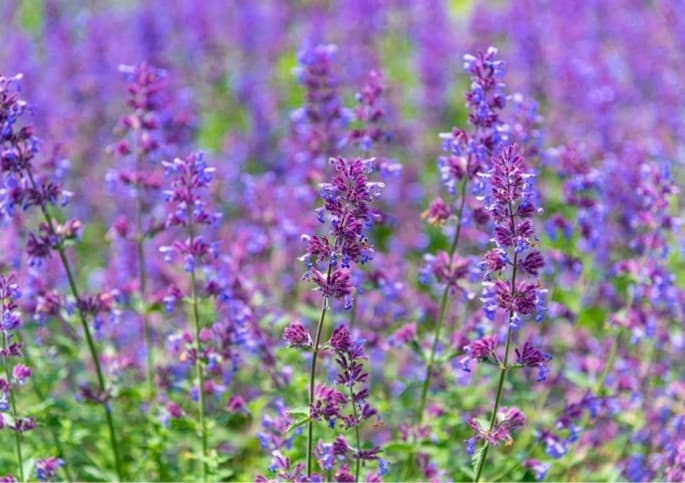
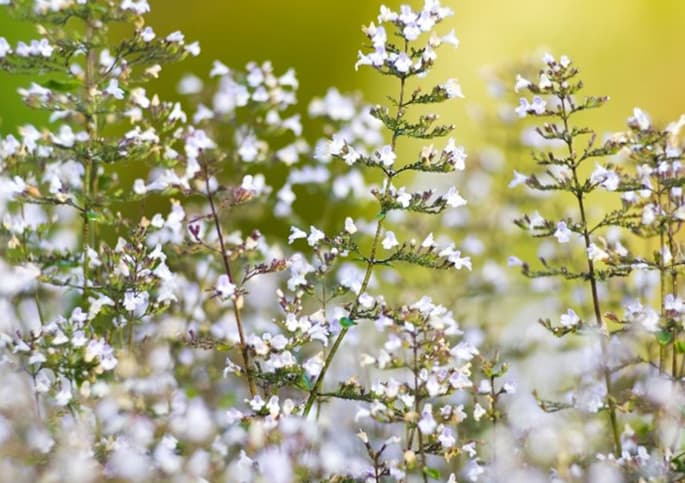
Penstemon are sun-loving semi-evergreen plants with spires of bell shaped flowers in tones of red, pink, purple and blue. The flowers appear as other early summer flowers start to fade and take the garden through until the frosts. My favourite is ‘Heavenly Blue’ with its small but gorgeous clear-blue and violet flowers.
Penstemon like well-drained soil in a sheltered sunny spot receiving at least 6 hours of sun a day. They are easy to care for. Leave the top growth on during the winter to protect the crown. Every spring mulch with compost and cut back all stems to just above any new growth at the base. During the flowering season cut faded flower stems to encourage more.
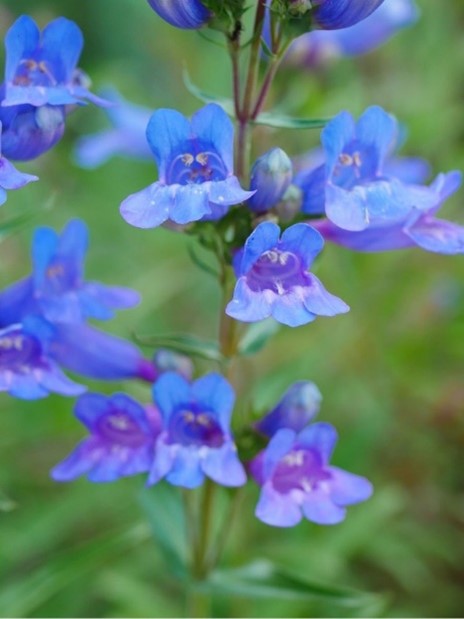
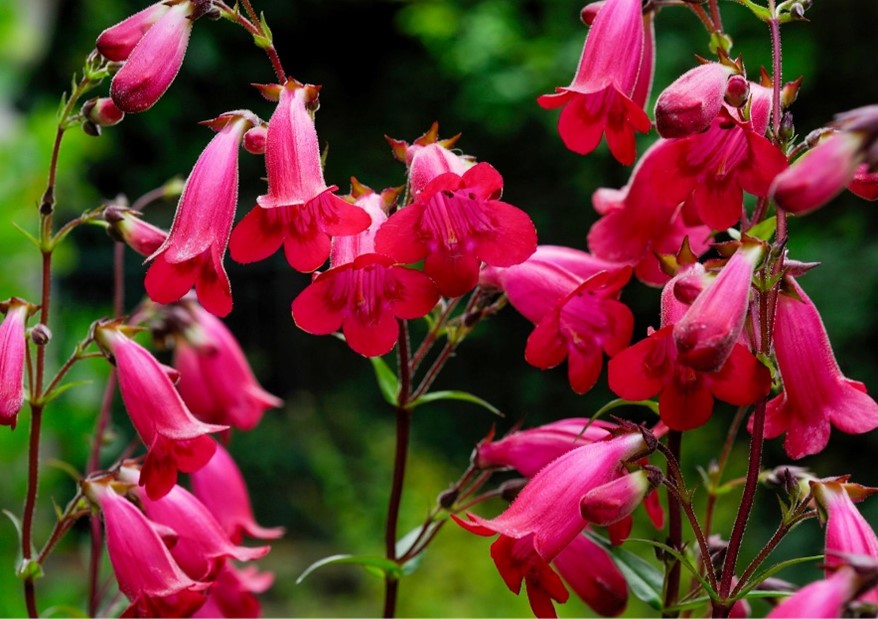
Salvias are stalwarts of the summer garden with many varieties flowering from June to the frosts. They come into their own as the early summer flowers begin to fade. The shorter nemerosa varieties like ‘East Friesland’ are great for underplanting roses while the taller varieties like ‘Amistad’ or ‘Hot Lips’ have vibrant jewel-like colours which mix wonderfully with grasses and dahlias. Salvias grow well in pots and bring joy to a patio for months. Their nectar rich flowers are magnets for bees.
Some varieties are less hardy and may need some winter protection, but they all like well drained soil in full sun. They often thrive in poor or stony soil. Deadhead to keep the flowers coming all summer. Leaving the stems on in autumn will help to give some protection over winter. Cut back hard in early spring to encourage bushy growth the following year.
‘Hot Lips’ is a very popular variety with bright red flowers that gradually develop white lips over the season becoming fully white by the autumn. ‘Cherry Lips’ and ‘Amethyst Lips’ are also available.
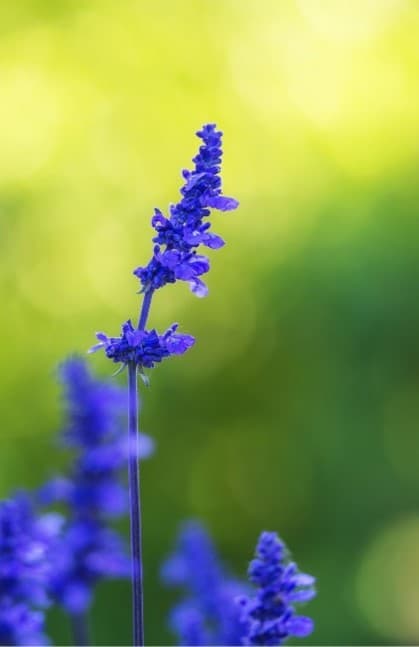
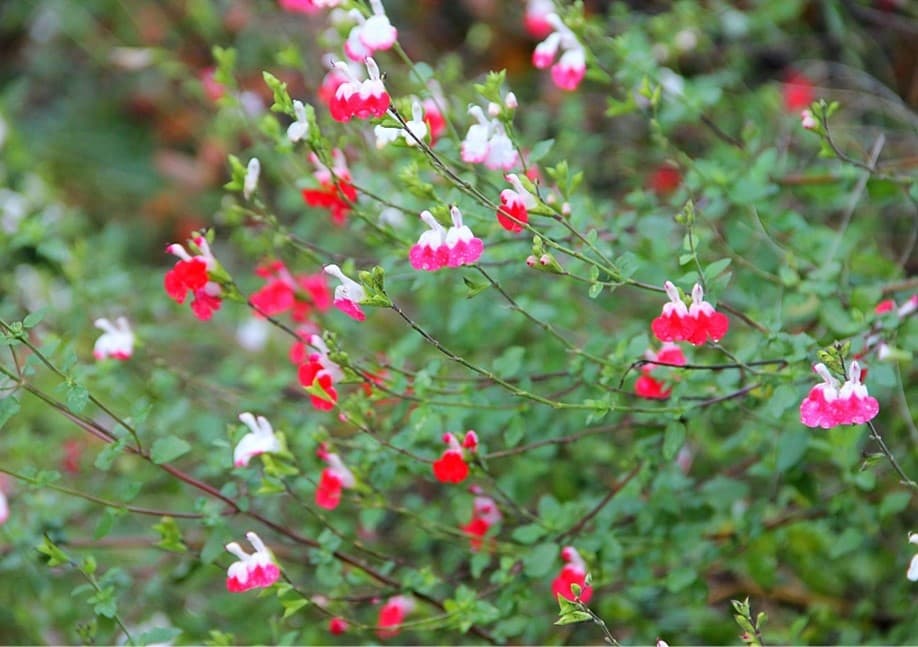
Verbena is a varied group of plants but the ones worth mentioning here are the tall airy ‘V. bonariensis’ and the slightly shorter V. bonariensis Lollipop’. These are hardy varieties, although they can be short-lived. The nectar rich purple flower cluster held aloft on stiff narrow stems are loved by bees and butterflies. Although they are tall, they do not need to be consigned to the back of a border. The stems are so narrow that you can see through them making them excellent plants to dot amongst others in a border. They marry well with deciduous grasses, salvias and look wonderful in a prairie style garden with other later flowering perennials.
Verbenas need free-draining soil and lots of sun. They are drought tolerant once established in the ground, but not in pots. Despite being short-lived Verbena bonariensis will often seed itself around, so you may not even notice if you loose one over winter. Their stiff hollow stems are perfect hibernating homes for beneficial insects and the seed heads look great sparkling with frost, so don’t cut back until late winter or early spring.
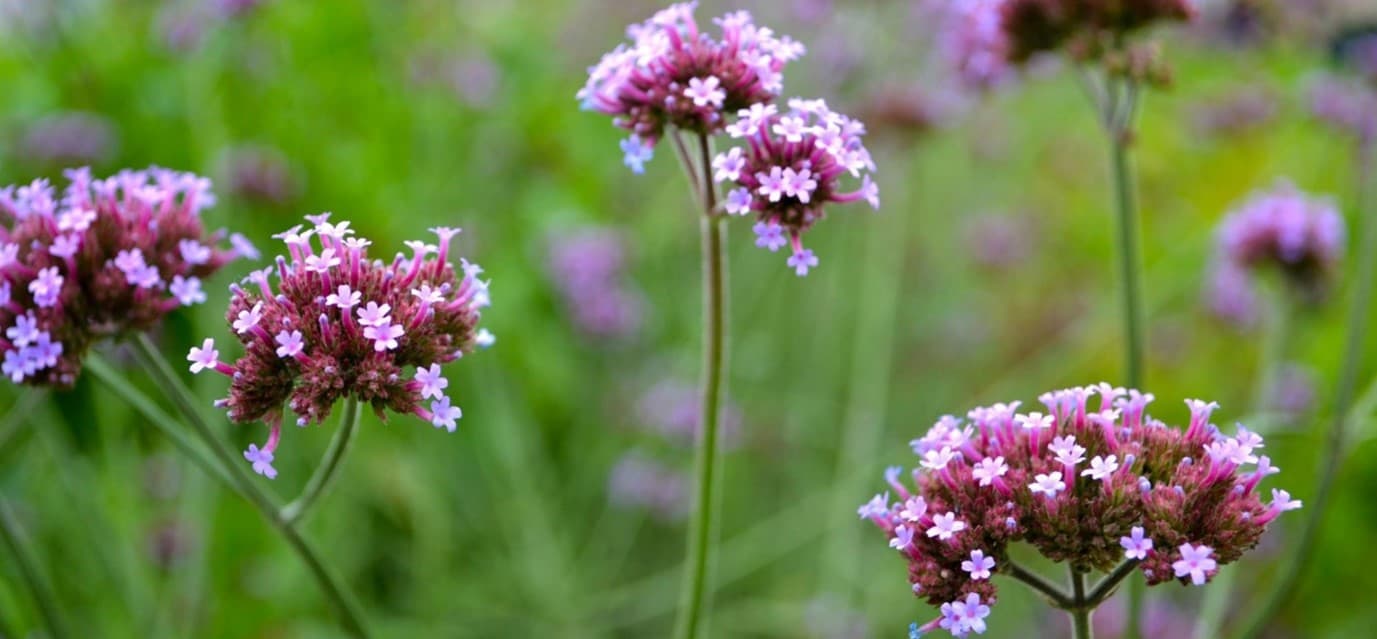
Perennials are wonderful for creating a magical garden which looks great from May to October. There are plants in hot colours, cool colours and everything in between. Whether you have a large garden or a small one, repeating blocks of perennials will give a rhythm to your space. They will last for years if you put a little time into the maintenance, making them good value for money. Choose a range of perennials to suit the mood of your garden and include a range of heights from low clumping varieties to taller spires. Choose some to give you early summer colour and others to take you through to the frosts. Evergreen varieties will give you winter interest as well as protecting soil during the colder wetter months. Perennials are often fantastic choices to support wildlife too. They may provide nectar for bees, seed heads for birds or nooks and crannies for insects to hibernate.
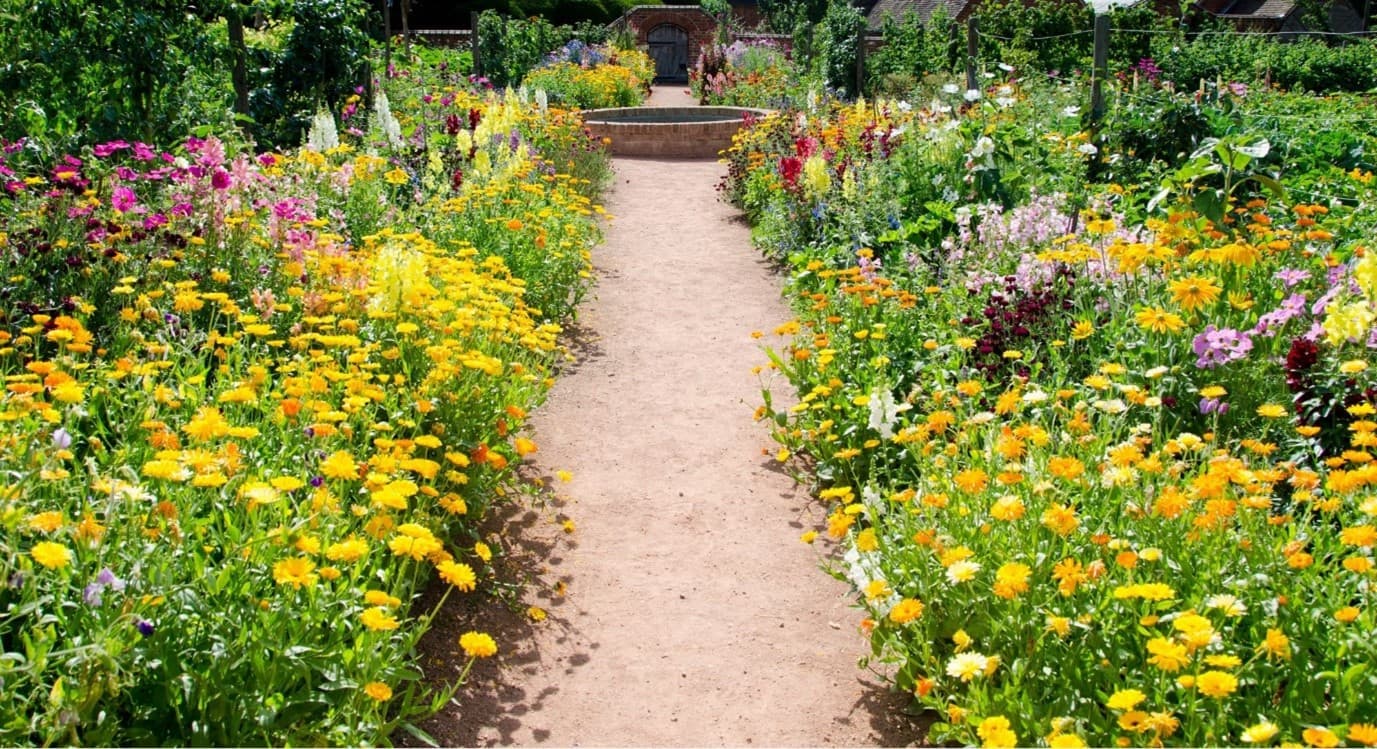
The ten examples I have chosen here are only a small selection of the possible plants you could grow in your space. Browse the perennials on our web shop by clicking here or come in to one of our garden centres and see an even greater range ready for planting out now.
The watering and drought indications I have given in this article are all for plants which have been planted in the ground. Bear in mind that any perennials planted in pots will need regular watering even if they are drought tolerant.

By our resident horticultural expert





